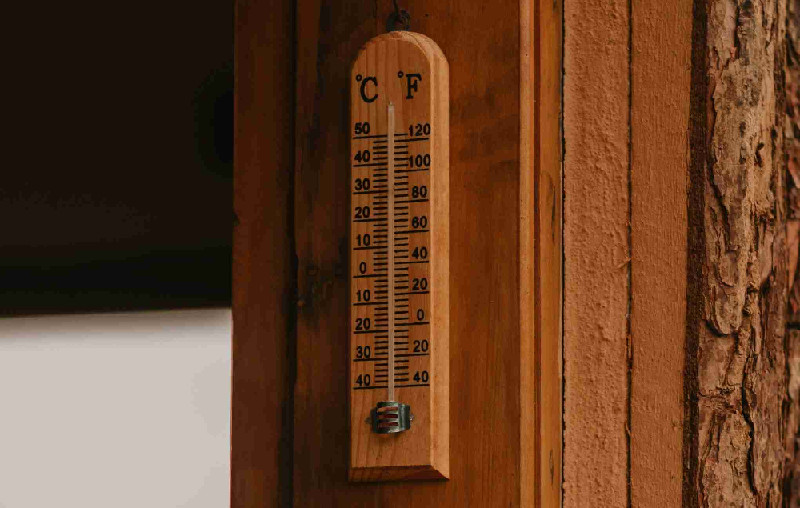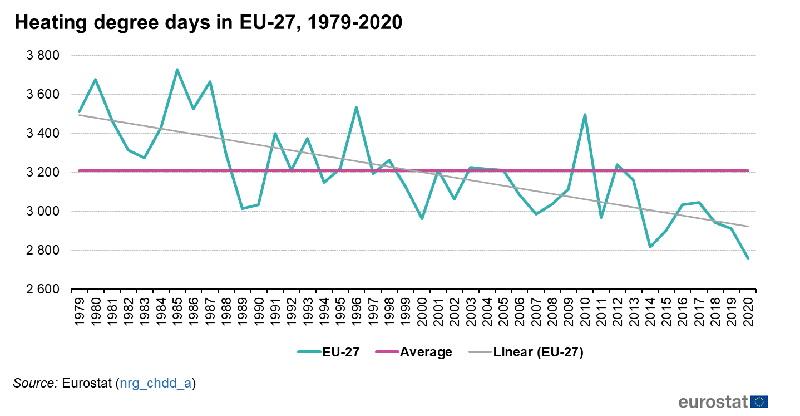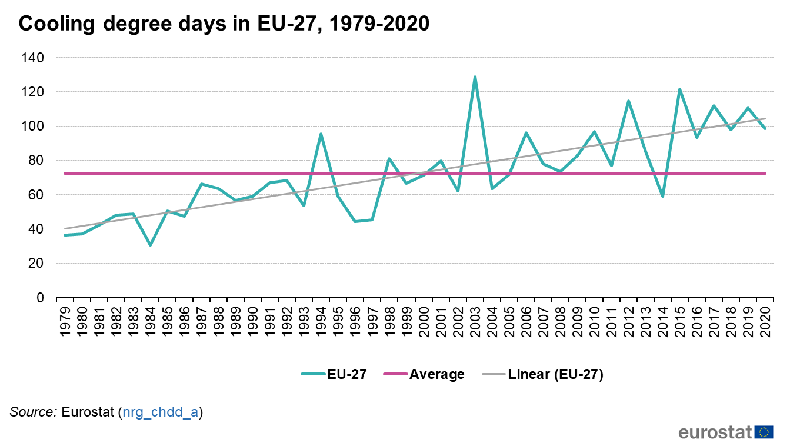Ever wondered how the Enectiva software simply knows the temperature outside? And how does it use it to adapt the energy consumption to maximise the effects and minimise the costs?
Amongst the different solutions, there is the use of the IPMVP, predictive technology and AI, and the one we will focus on in this article: the measure of Heating & Cooling Degree Days.

How does it work?
Enectiva uses a premium version of the Accuweather service to connect to the closest weather station to the designated building, and uses the temperature data to compute the relation between outside temperature and energy consumption. It is a simplified version of the complexity of outside air to make calculations manageable.
A heating degree day (HDD) is the measure of how many degrees for a certain amount of time was lower than the desired temperature, meaning the building had to be heated. A cooling degree day (CDD) is the same but with the opposite parameters to know the energy required to cool down the building when the temperature is above a desired level.
The degree days are important for the consumption comparison required to make better decisions on how to reduce the costs, or properly evaluate energy savings. To compare properly, it is necessary to take into account the time passed for a specific timespan. It is the same as comparing the gas consumption of two cars, it cannot be done in a correct manner without taking into account the kilometers driven. The same goes for energy consumption in buildings.
A lot of people use the heating and cooling degree days reports to make the decision by themselves to optimise their energy consumption, but it is easy to misunderstand and make the wrong conclusions from a heating or cooling degree days graph. Enectiva takes these data to automatically apply the necessary changes, making sure no mistake in interpretation can be made, as part of the greater energy management strategy the software helps with. That, paired with a thermostatic valve ensures a total control over energy consumption.
Another important factor Enectiva and the degree days help with is fighting climate change. Below are Eurostat figures, specifically on both degree days within the 27 members of the European Union from 1979 to 2020. The effects of global warming are clear since the trend of the heating degree days is in clear reduction when the trend of the cooling degree days follows an upwards curve. While this means there is not as much need to heat up buildings as it was needed before, which means energy and cost savings (that Enectiva helps you detect and proactively act on it to avoid unnecessary expenses), it also means the average temperature has risen enough to need more cooling degree days, which is in turn going to increase the energy expenditure.


In the end, the degree days are a great way of monitoring the energy requirements, especially when plotted on a longer term graph. It is obvious for example that preparing for less heating and more cooling is becoming increasingly more widespread across Europe, and it helps prepare beforehand. Enectiva helps decrease the consumption and the costs but still living in comfortable temperatures, while actively doing efforts to reduce the effects of climate change that we are already witnessing, as well as reducing the financial impact of the general energy rising prices.